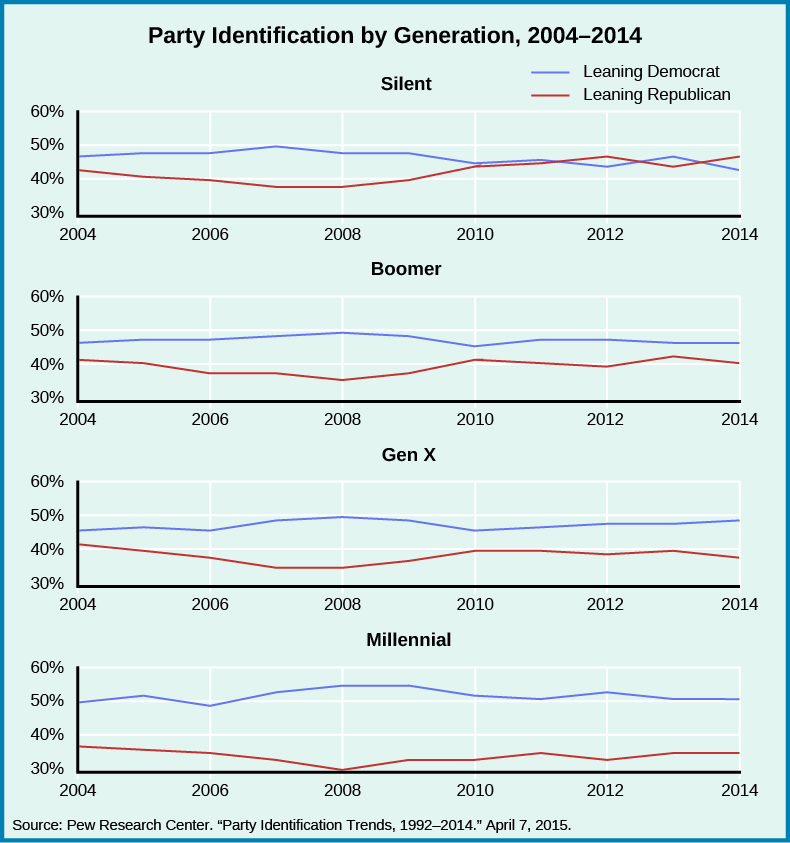| << Chapter < Page | Chapter >> Page > |
Party identifiers make up the majority of the voting public. Gallup, the polling agency, has been collecting data on voter preferences for the past several decades. Its research suggests that historically, over half of American adults have called themselves “Republican” or “Democrat” when asked how they identify themselves politically (
[link] ). Even among self-proclaimed independents, the overwhelming majority claim to lean in the direction of one party or the other, suggesting they behave as if they identified with a party during elections even if they preferred not to publicly pick a side. Partisan support is so strong that, in a poll conducted from August 5 to August 9, 2015, about 88 percent of respondents said they either identified with or, if they were independents, at least leaned toward one of the major political parties.

Strictly speaking, party identification is not quite the same thing as party membership. People may call themselves Republicans or Democrats without being registered as a member of the party, and the Republican and Democratic parties do not require individuals to join their formal organization in the same way that parties in some other countries do. Many states require voters to declare a party affiliation before participating in primaries, but primary participation is irregular and infrequent, and a voter may change his or her identity long before changing party registration. For most voters, party identification is informal at best and often matters only in the weeks before an election. It does matter, however, because party identification guides some voters, who may know little about a particular issue or candidate, in casting their ballots. If, for example, someone thinks of him- or herself as a Republican and always votes Republican, he or she will not be confused when faced with a candidate, perhaps in a local or county election, whose name is unfamiliar. If the candidate is a Republican, the voter will likely cast a ballot for him or her.
Party ties can manifest in other ways as well. The actual act of registering to vote and selecting a party reinforces party loyalty. Moreover, while pundits and scholars often deride voters who blindly vote their party, the selection of a party in the first place can be based on issue positions and ideology. In that regard, voting your party on Election Day is not a blind act—it is a shortcut based on issue positions.

Notification Switch
Would you like to follow the 'American government' conversation and receive update notifications?